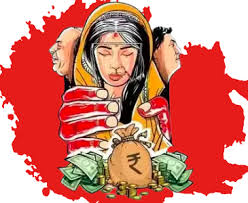
The Ashoka Chakra: A Symbol of Enlightenment and Transformation
The Ashoka Chakra, a powerful symbol deeply ingrained in Indian history and spirituality, holds significant cultural and national importance. Originating from Emperor Ashoka's reign, it is prominently featured on the Indian national flag and represents the Dharmachakra. This article explores the profound meaning and symbolism behind the Ashoka Chakra.

The Significance of the Ashoka Chakra
The Ashoka Chakra finds its roots in the teachings of Gautama Buddha. After attaining enlightenment in Bodh Gaya, Buddha travelled to Sarnath, where he reunited with his five disciples. It was there that he delivered his first teachings, establishing the Dharmachakra, the Wheel of Dharma. Emperor Ashoka, inspired by this sacred motif, incorporated it into his pillars and edicts, showcasing its significance.
The Ashoka Chakra is prominently displayed at the centre of the Indian national flag, adopted on July 22, 1947. Replacing the charkha symbol, it represents the eternal wheel of law and righteousness. The navy blue colour symbolises the sky and the ocean, representing truth and compassion, while the white background represents purity and peace.

Symbolism
The Ashoka Chakra consists of 24 spokes radiating from the centre. Each spoke holds deep symbolism, representing the teachings of Buddha and the path to liberation. They also depict the concept of Dependent Origination or Conditional Arising, which explains the cycle of suffering and its cessation.
The first twelve spokes represent the stages of suffering or the twelve causal links taught by Buddha. They include ignorance, conditioning of the mind unknowingly, not being conscious, name and form, the six senses, contact, sensation, thirst, grasping, coming to be, birth, and old age and death. These stages illustrate the interconnectedness of human experiences and the cycle of existence.
The following twelve spokes represent the cessation of cause and effect. Through awareness of the mind, mental conditioning ceases, leading to the end of the process of birth and death, known as nibbāna. This cessation signifies liberation from suffering and the attainment of spiritual enlightenment.

The Ashoka Chakra as a Symbol of Transformation:
The Ashoka Chakra embodies the transformative power of spirituality and the potential for personal growth and enlightenment. It symbolises the journey from ignorance to wisdom, from suffering to liberation. By embracing the teachings of the Ashoka Chakra, individuals can cultivate positive change within themselves and inspire others to strive for righteousness and harmony.
Conclusion

The Ashoka Chakra stands as a timeless emblem of enlightenment and transformation. Its presence on the Indian national flag represents the nation's commitment to justice, truth, and compassion. By understanding the profound symbolism behind the Ashoka Chakra, we can draw inspiration to embark on our own journey of self-discovery, compassion, and spiritual growth.
By Mamta Rajbhar
(The images used in this blog post are not owned by Anime Devta, they are just to help the readers)

